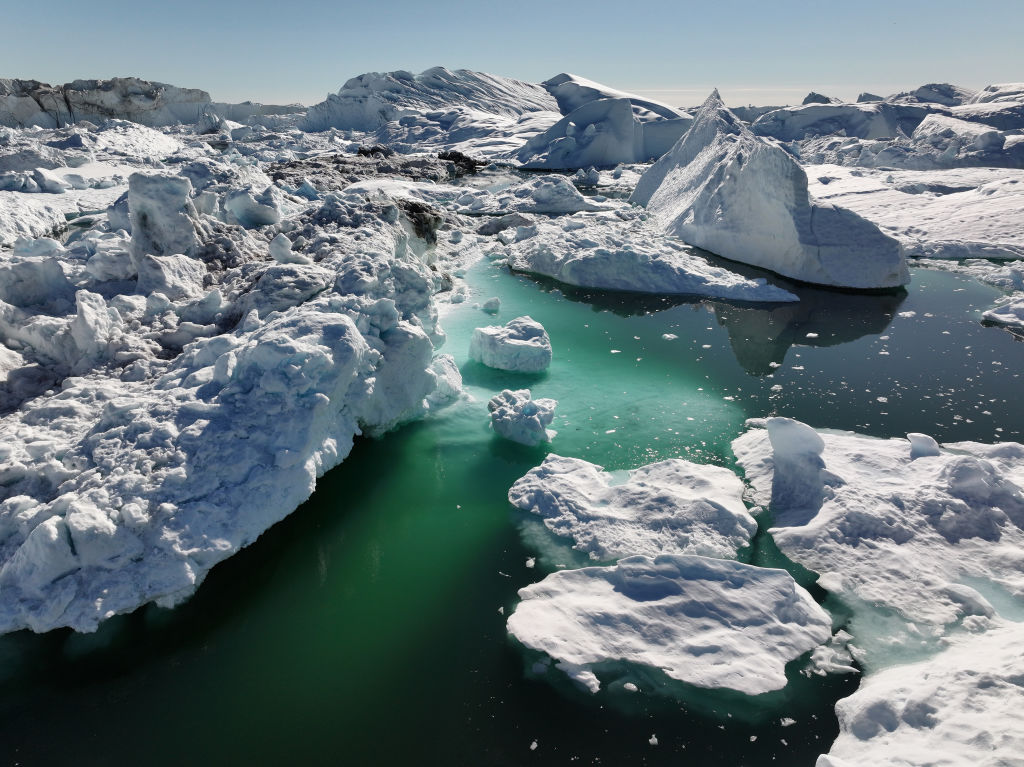The U.S. Department of Defense released its 2024 Arctic Strategy in July. The 28-page document calls for increased investment and bolstering alliances in an increasingly contested region. AFP/GETTY IMAGES
THE WATCH STAFF
A changing climate, increasing threats from Russia and the People’s Republic of China (PRC), and an unforgiving physical environment all present challenges to the United States’ goal of a stable and secure Arctic region. To confront those challenges, the U.S. Department of Defense (DOD) updated its Arctic Strategy in July 2024 to reflect its posture of a monitor-and-respond approach to potential conflicts.
The 28-page document outlines the U.S. strategy to maintain an international rules-based order in the region, which is undergoing significant change. Melting ice promises increased trading routes through the region and increased competition for resources, and the rise of the PRC, a pacing competitor, and its evolving alliance with Russia present unprecedented challenges. “Increasingly, the PRC and Russia are collaborating in the Arctic across multiple instruments of national power. While significant areas of disagreement between the PRC and Russia remain, their growing alignment in the region is of concern, and DOD continues to monitor this cooperation,” the strategy document states.
An effective counterstrategy is to build up Arctic infrastructure, climate-appropriate equipment and engage with allies. The document notes that seven of the eight Arctic nations are NATO allies with Finland and Sweden, changing the strategic calculus of the European Arctic with their recent addition to the trans-Atlantic alliance. The strategy also envisions outreach to Indigenous communities to increase domain awareness of often harsh weather patterns. And, crucially, the strategy calls for more advanced sensors and missile defenses to deter any attempt by Russia to inflict damage to the homeland or hobble the U.S.’s ability to respond militarily overseas. “By continuing to invest in sensors, intelligence, and information-sharing capabilities, DOD will enhance our understanding of the Arctic operating environment as well as our ability to manage risk. DOD should review existing equipment and infrastructure and develop options to sustain a monitor-and-respond approach,” the document states.
Deputy Secretary of Defense Dr. Kathleen Hicks told reporters at a July 2024 news conference that the strategy’s agility is a strength. “In the Arctic, the strategic can quickly become tactical, ensuring that our troops have the training, the gear and the operating procedures for the unique Arctic environment could be the difference between mission success and failure. It is imperative that the joint force is equipped and trained with what they need to operate in the Arctic and while succeeding in the Arctic will require effort, the DOD will not navigate these challenges alone,” she said, according to a transcript of the event.
A crucial part of the strategy’s desired end state is to preserve the Arctic as a stable, secure region through cooperation with allies and partners, adhering to international rules-based norms. The strategy notes the PRC’s recent attempt to insert itself into a region that falls completely within the territories of sovereign nations. With its call for a “global commons” for the Arctic, the PRC is seeking to rewrite the rules that govern the region’s resources, sea lanes and inhabitants, the document states. Responding to a question from a reporter with The Associated Press at the news conference, Hicks characterized the PRC and Russian activity in the region as worrying. “It’s very noticeable and concerning both individually. The Russians — of course have even as they’ve continued their operation, their war in Ukraine they’ve been continuing to invest in their infrastructure throughout the Arctic region that they can access. And then we’ve seen much more PRC activity both in terms of so-called research, but because of their civ-mil fusion, we always have concern that there’s a military aspect to that. And also in terms of their activities, for instance, with the Russians in terms of bomber patrols, maritime, etc.,” she said.

